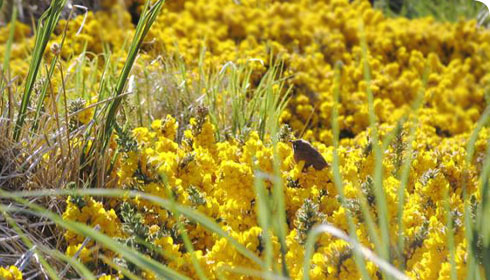Distribution
Distribution
Endemic to the Falkland Island archipelago were it is only found on small offshore, predator-free islands.
Habitat
Associated with tussac grass (Parodiochloa flabellata), a very tall and dense Falkland plant.
Optimum habitat is dense tussac-grassland growing from the high-water mark behind boulder beaches with accumulated dead kelp in which invertebrates thrive.
It also occurs in rushes and among rock outcrops up to 1 mile from coastal tussac.
Population biology
Surveys in 1998/1999 estimated the total population at 4,500 – 8,000 pairs.
